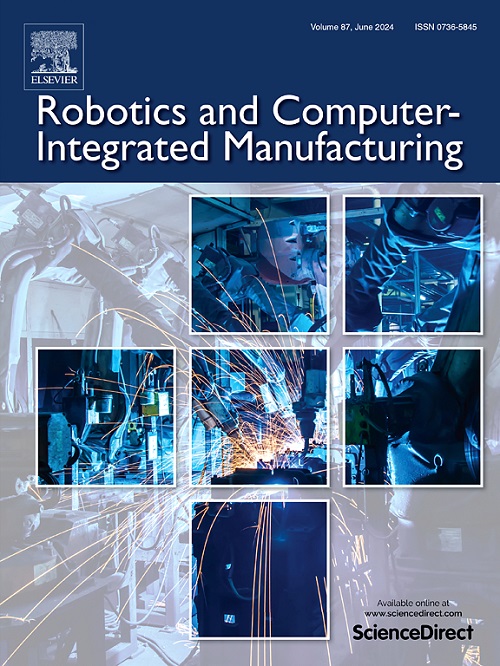Force-based adaptive deposition in multi-axis additive manufacturing: Low porosity for enhanced strength
IF 11.4
1区 计算机科学
Q1 COMPUTER SCIENCE, INTERDISCIPLINARY APPLICATIONS
引用次数: 0
Abstract
Multi-axis additive manufacturing enhances mechanical strength by aligning printed layers with principal stress directions. However, this benefit introduces a key challenge: non-uniform layer thickness becomes inevitable due to surface curvature and deposition angle variations. Moreover, unpredictable errors in material deposition – such as inaccurate extrusion control, collapse of earlier deposited layers, or machine malfunctions – can accumulate throughout the build. These issues are difficult to model accurately in advance, making purely offline planning impractical for ensuring consistent print quality, especially in complex geometries. To address this issue, we propose a force-based adaptive deposition method that actively minimizes porosity during filament-based multi-axis AM. Our closed-loop control strategy dynamically adjusts the printhead’s motion speed based on real-time force feedback, while maintaining constant extrusion speed. Unlike geometry-driven offline planning approaches, our method compensates for thickness variation and process uncertainties, resulting in improved filament bonding. Experiments show up to a 72.1% increase in failure load compared to baseline methods, with similar or lower part weights. The approach also enhances robustness against extrusion irregularities, ensuring more consistent mechanical performance.
多轴增材制造中基于力的自适应沉积:低孔隙率增强强度
多轴增材制造通过将打印层与主应力方向对齐来提高机械强度。然而,这一优势带来了一个关键的挑战:由于表面曲率和沉积角度的变化,层厚度不均匀是不可避免的。此外,材料沉积中不可预测的错误——例如不准确的挤压控制、早期沉积层的坍塌或机器故障——可能在整个构建过程中累积。这些问题很难提前准确建模,使得纯粹的离线规划无法确保一致的打印质量,特别是在复杂的几何形状中。为了解决这个问题,我们提出了一种基于力的自适应沉积方法,该方法可以在基于细丝的多轴AM过程中主动减少孔隙率。我们的闭环控制策略基于实时力反馈动态调整打印头的运动速度,同时保持恒定的挤出速度。与几何驱动的离线规划方法不同,我们的方法补偿了厚度变化和工艺不确定性,从而改善了长丝粘合。实验表明,与基线方法相比,在零件重量相似或更低的情况下,失效载荷增加了72.1%。该方法还增强了抗挤压不规则性的稳健性,确保了更一致的机械性能。
本文章由计算机程序翻译,如有差异,请以英文原文为准。
求助全文
约1分钟内获得全文
求助全文
来源期刊
CiteScore
24.10
自引率
13.50%
发文量
160
审稿时长
50 days
期刊介绍:
The journal, Robotics and Computer-Integrated Manufacturing, focuses on sharing research applications that contribute to the development of new or enhanced robotics, manufacturing technologies, and innovative manufacturing strategies that are relevant to industry. Papers that combine theory and experimental validation are preferred, while review papers on current robotics and manufacturing issues are also considered. However, papers on traditional machining processes, modeling and simulation, supply chain management, and resource optimization are generally not within the scope of the journal, as there are more appropriate journals for these topics. Similarly, papers that are overly theoretical or mathematical will be directed to other suitable journals. The journal welcomes original papers in areas such as industrial robotics, human-robot collaboration in manufacturing, cloud-based manufacturing, cyber-physical production systems, big data analytics in manufacturing, smart mechatronics, machine learning, adaptive and sustainable manufacturing, and other fields involving unique manufacturing technologies.

 求助内容:
求助内容: 应助结果提醒方式:
应助结果提醒方式:


